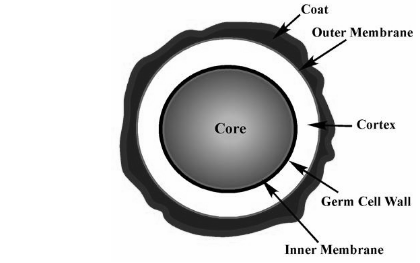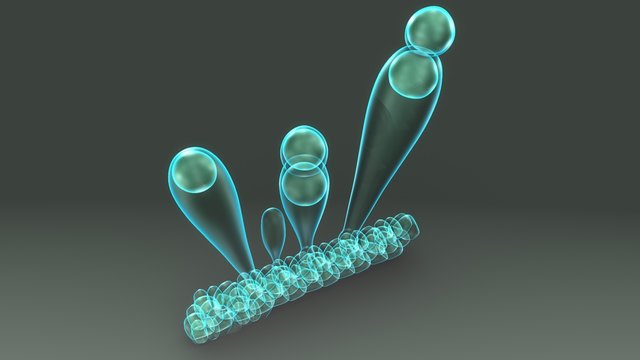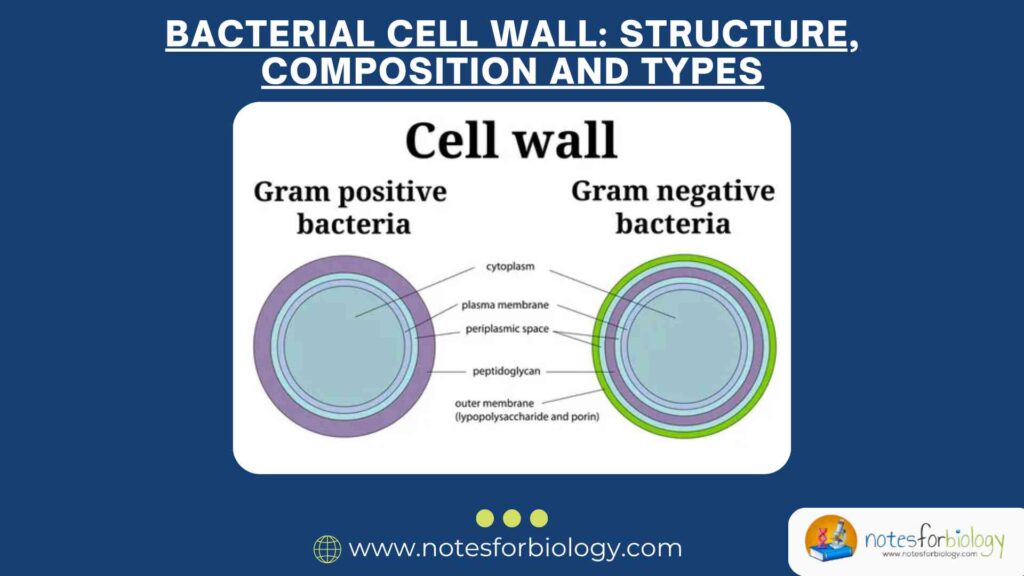Bacteria are among the most resilient and adaptive organisms on earth, capable of surviving in various environments, including those that are extremely hostile. One of the remarkable survival strategies employed by certain bacteria is the formation of highly resistant structures known as spores. Bacterial spores, especially endospores, are dormant, non-reproductive forms that enable the organism to withstand unfavorable conditions such as extreme heat, desiccation, radiation, and chemical exposure. These spores can remain viable for extended periods, and when conditions improve, they germinate to regenerate active bacterial cells. This detailed content explores the structure, types, processes of sporulation, and germination of bacterial spores.
Summary of Bacterial Spore
- Bacterial spores are dormant, highly resistant structures formed by certain bacteria, enabling them to survive extreme conditions like heat, desiccation, radiation, and chemicals.
- Endospores, the most studied type, have a complex structure with multiple protective layers including a core, cortex, spore coat, and sometimes an exosporium.
- The spore undergoes sporulation under adverse conditions and can germinate back into a vegetative cell when favorable conditions return, ensuring the bacterium’s survival and continuity.
Table of Contents
Definition of Bacterial Spore
A bacterial spore is a dormant, metabolically inactive, and highly resistant form of a bacterium produced in response to adverse environmental conditions. The primary function of a spore is to ensure the long-term survival of the bacterium by withstanding conditions that are otherwise lethal to the vegetative form. Once favorable conditions return, these spores can revert to their active, growing state, ensuring the continuation of the bacterial species.
Structure of Bacterial Spore

Spore Core
At the heart of a bacterial spore lies the spore core, which contains the cell’s essential genetic material in the form of DNA, along with ribosomes and dipicolinic acid. The cytoplasm within the core is highly dehydrated, which contributes significantly to the spore’s resistance to heat and radiation. Enzymes necessary for spore germination are also present in the core, although they remain inactive until favorable conditions arise.
Inner Membrane
Encasing the spore core is the inner membrane. This membrane acts as a highly impermeable barrier, protecting the spore’s internal contents from chemical damage. It regulates the passage of ions and small molecules, maintaining the core’s dehydrated state essential for its durability.
Cortex
Surrounding the inner membrane is the cortex, a thick layer composed primarily of peptidoglycan. This layer differs structurally from the peptidoglycan found in vegetative cells, providing flexibility and contributing to the spore’s ability to withstand extreme environmental stresses. The cortex plays a vital role in spore dehydration and heat resistance.
Outer Membrane
The cortex is enclosed by the outer membrane, a lipid bilayer structure. Though relatively thin, it serves as an additional protective barrier that contributes to the overall resistance of the spore.
Spore Coat
Encasing the outer membrane is the spore coat, a robust multi-layered structure composed of proteins rich in cysteine, which form disulfide bonds, making it extremely tough. This coat is largely responsible for the spore’s resistance to chemicals, enzymes, and physical agents such as ultraviolet radiation.
Exosporium
Some bacterial spores possess an additional outermost layer called the exosporium. This loose-fitting structure is composed of proteins, lipids, and carbohydrates. While it is thinner and more delicate compared to the spore coat, the exosporium provides supplementary protection and may play a role in the initial interactions between the spore and its environment.
Types of Bacterial Spores
Endospores

Endospores are the most common and extensively studied type of bacterial spore. They form within the vegetative bacterial cell, hence the prefix ‘endo’. When environmental conditions become unfavorable, such as nutrient depletion, specific bacteria like Bacillus and Clostridium species initiate endospore formation. These endospores are highly resistant and can survive for extended periods under extreme conditions.
Exospores

Exospores are produced externally by certain filamentous bacteria, particularly species of the genus Streptomyces. Unlike endospores, exospores are formed by budding or fragmentation at the ends of bacterial filaments. These spores are less resistant compared to endospores but still serve as a survival mechanism.
Cysts
Cysts are another form of resistant, dormant structure produced by some bacteria like Azotobacter. While not as resilient as endospores, cysts can withstand desiccation and nutrient deprivation. They lack the complex layered structure of endospores but still enable the bacterium to survive adverse environmental conditions.
Myxospores
Formed by members of the Myxobacteria group, myxospores arise as a result of multicellular fruiting body formation. These spores are produced in response to nutrient scarcity and other environmental stresses. Myxospores are moderately resistant and revert to vegetative cells when favorable conditions return.
Sporulation
Sporulation is a complex, multi-stage process that occurs under nutrient deprivation. It takes about 6–8 hours in Bacillus subtilis and involves the following stages:
Initiation of Sporulation
Sporulation, also known as sporogenesis, is the complex process by which a vegetative bacterial cell transforms into a spore. The process is typically triggered by adverse conditions, such as nutrient depletion, desiccation, and other environmental stresses. The bacterial cell detects these changes through specific molecular signaling pathways that initiate the sporulation process.
Chromosome Replication
The first step in sporulation involves the replication of the bacterial chromosome. Following replication, the cell undergoes an asymmetric division, resulting in the formation of two unequal compartments: a larger mother cell and a smaller forespore, each containing a copy of the chromosome.
Forespore Formation
The forespore, which eventually becomes the spore core, is enveloped by a membrane derived from the mother cell. This membrane later develops into the inner membrane of the spore. As sporulation progresses, the forespore undergoes extensive dehydration and the accumulation of calcium and dipicolinic acid, both of which contribute to the spore’s resilience.
Cortex and Coat Formation
Following forespore formation, a thick peptidoglycan layer called the cortex is deposited between the two membranes of the forespore. The mother cell synthesizes and assembles the spore coat proteins around the developing spore, forming the robust protective layers essential for spore resistance.
Maturation and Release
After the formation of the cortex and spore coat, the spore undergoes a maturation phase, during which it achieves maximum resistance to environmental stresses. Upon completion of sporulation, the mother cell undergoes autolysis, releasing the mature, free spore into the environment, where it remains dormant until conditions improve.
Germination
Activation
Germination is the process by which a dormant spore returns to its active vegetative state when environmental conditions become favorable. The first stage of germination is activation, during which the spore senses specific environmental signals such as the presence of nutrients, water, and appropriate temperature. Heat shock treatment is also known to artificially activate spores in laboratory settings.
Germination Stage
Following activation, the germination stage begins. During this phase, the spore absorbs water, leading to the breakdown of the spore cortex. Hydrolytic enzymes degrade the peptidoglycan cortex, causing the spore to swell and lose its refractility. Dipicolinic acid and calcium ions are released, and metabolic activity gradually resumes within the spore.
Outgrowth
The final phase of germination is outgrowth. The spore core rehydrates completely, and the inner membrane becomes metabolically active. Macromolecular synthesis resumes as the spore transforms into a vegetative bacterial cell. Cell wall synthesis, DNA replication, and ribosome assembly are restored, leading to the emergence of a fully functional bacterial cell capable of growth and division.
Significance of Bacterial Spores
Bacterial spores, especially endospores, are highly resistant, dormant structures formed by certain bacteria like Bacillus and Clostridium. They allow bacteria to survive extreme conditions such as high temperatures, desiccation, radiation, chemicals, and nutrient deprivation. Spores ensure long-term survival and can germinate back into active cells when conditions become favorable.
In clinical settings, spores are important because they contribute to the spread of diseases like anthrax, tetanus, and botulism. Their high resistance makes sterilization difficult, requiring advanced methods like autoclaving.
In the food industry, spores can survive cooking and lead to food spoilage or foodborne illnesses. Strict processing and sterilization are necessary to control them.
In biotechnology and agriculture, spore-forming bacteria are used as probiotics, biopesticides (Bacillus thuringiensis), and in bioremediation. They’re also used as biological indicators to test sterilization procedures.
Spores have evolutionary importance, as they help bacteria persist through environmental extremes, and are being explored in vaccine delivery and microbial research due to their stability and resistance.
Conclusion
Bacterial spores represent a remarkable evolutionary adaptation, providing bacteria with the ability to endure extreme environmental conditions that would otherwise be fatal to vegetative cells. Their complex structure, composed of multiple protective layers, ensures maximum resistance to heat, desiccation, radiation, and chemicals. Several types of bacterial spores exist, with endospores being the most extensively studied and highly resistant form. The processes of sporulation and germination illustrate the dynamic ability of bacteria to alternate between active and dormant states in response to environmental cues. Understanding the structure, formation, and germination of bacterial spores is crucial in fields ranging from microbiology and food safety to medicine and biotechnology, where spore-forming bacteria can be either beneficial or pathogenic.
Frequently Asked Questions (FAQ)
What is the bacterial spore?
A bacterial spore is a dormant, tough, and highly resistant form of a bacterium that helps it survive harsh environmental conditions until favorable conditions return.
What is a bacterial spore in food hygiene?
In food hygiene, a bacterial spore is a heat-resistant, dormant form of bacteria that can survive cooking and food processing, later germinating to cause food spoilage or illness if not properly controlled.
What are the 3 spore-forming bacteria?
The three common spore-forming bacteria are Bacillus, Clostridium, and Sporolactobacillus species.
Related Contents
Bacterial Cell: Structure and Function
Branches of Biology – Definition , Scope and Emerging Fields




